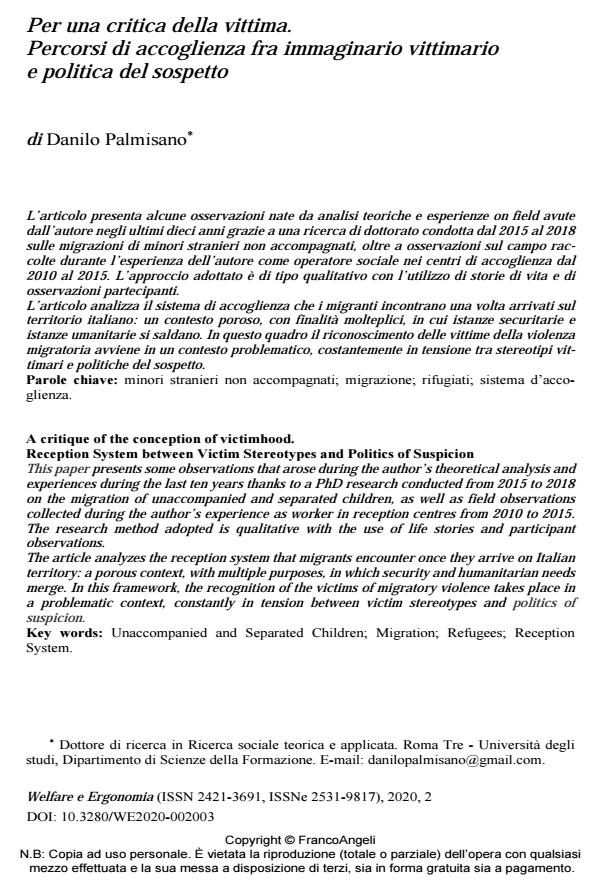A critique of the conception of victimhood. Reception System between Victim Stereotypes and Politics of Suspicion
Journal title WELFARE E ERGONOMIA
Author/s Danilo Palmisano
Publishing Year 2021 Issue 2020/2
Language Italian Pages 11 P. 20-30 File size 193 KB
DOI 10.3280/WE2020-002003
DOI is like a bar code for intellectual property: to have more infomation
click here
Below, you can see the article first page
If you want to buy this article in PDF format, you can do it, following the instructions to buy download credits

FrancoAngeli is member of Publishers International Linking Association, Inc (PILA), a not-for-profit association which run the CrossRef service enabling links to and from online scholarly content.
This paper presents some observations that arose during the author’s theoretical analysis and experiences during the last ten years thanks to a PhD research conducted from 2015 to 2018 on the migration of unaccompanied and separated children, as well as field observations collected during the author’s experience as worker in reception centres from 2010 to 2015. The research method adopted is qualitative with the use of life stories and participant observations. The article analyzes the reception system that migrants encounter once they arrive on Italian territory: a porous context, with multiple purposes, in which security and humanitarian needs merge. In this framework, the recognition of the victims of migratory violence takes place in a problematic context, constantly in tension between victim stereotypes and politics of suspicion.
Keywords: Unaccompanied and Separated Children; Migration; Refugees; Reception System.
Danilo Palmisano, Per una critica della vittima. Percorsi di accoglienza fra immaginario vittimario e politica del sospetto in "WELFARE E ERGONOMIA" 2/2020, pp 20-30, DOI: 10.3280/WE2020-002003